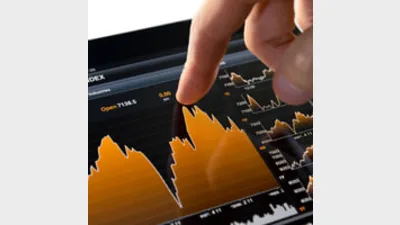Separately managed account benefits weighed up



 Lin Ngin looks at how SMAs operate and explores some of the features and benefits on offer as well as some of the current limitations.
Lin Ngin looks at how SMAs operate and explores some of the features and benefits on offer as well as some of the current limitations.
Separately managed accounts (SMAs) have emerged in the Australian market over the past decade, although they have a longer track record and enjoy greater popularity in the US market.
SMAs can be seen as an evolution of the platform business and share some of the benefits of master trusts and wraps (such as ease of reporting), while providing investors with a number of new benefits, most visibly the ability to hold assets directly in the investor’s name (as opposed to being held in the name of the platform).
What is an SMA?
An SMA can be seen as a further development of the platform. Rather than holding units in managed funds, an SMA is able to bypass the managed fund structure and hold the same underlying investment portfolio, but in the name of the investor rather than the platform.
Typically, the SMA provider will offer investors a ‘model portfolio’ in order to construct the underlying investment portfolio.
This model portfolio can be passive in nature (such as an index like the ASX20) or can be actively managed by a fund manager.
Where it is managed by a fund manager, the investment strategy driving the model portfolio may be the same as, or close to, an existing managed fund product.
Benefits of SMAs
SMAs have a number of benefits over other investment platforms as a result of investors directly owning underlying investments. These include:
Tax efficiency
In a standard managed fund, normal trust accounting often creates a disconnect between the realised capital gains/losses generated by the underlying portfolio and the capital gains/losses actually distributed or attributable to each investor.
For example, where one investor lodges a redemption and causes a managed fund to realise some capital gains/losses, the capital gains/losses are distributed equally amongst all investors.
An SMA avoids this situation as each investor owns their own portfolio rather than holding units in a common fund alongside other investors.
Tax efficiencies are also evident where investors seek to change managers. A change of manager in a direct managed fund investment would involve redeeming units (crystallising capital gains/losses) and purchasing units in a new fund.
In an SMA, investors would only need to trade securities where there is a difference between the new and old model portfolios, potentially reducing the amount of realised capital gain/losses that may be generated.
Lastly, SMAs allow investors to be more tactical in the way trades are executed.
For example, where a change in a model portfolio may cause capital gains to be crystallised, investors may be able to offset the gain by also selling a security that has unrealised capital losses. In a managed fund, investors have no ability to tactically trade to minimise the impact of capital gains.
Tax reporting
In a managed fund, the fund’s tax reports need to be generated and finalised before tax reports for each individual investor can be produced. In an SMA, as individual investors own their underlying portfolio, tax reporting should occur in a more timely fashion.
Transparency
Investors in managed funds typically do not have timely access, or have limited ability to view the underlying investments. In an SMA, investors have full transparency of investments they are holding.
Customisation
Implementation of changes in model portfolios may be tailored for each individual investor. This is generally possible where the SMA implements the model portfolio, as opposed to a manager.
Examples of customisation may include screening some model portfolio stocks on ethical grounds. In a managed fund, such specific tailoring would not be possible as investors simply own units in a fund.
Current limitations
While some of the main benefits have been outlined, a number of limitations currently exist.
These include:
Limited manager choice
Investors in managed funds typically have a wide choice of products offered by fund managers.
For example, in the area of large cap Australian equities, Lonsec provides research on more than 30 fund managers offering products in the Australian market; there are also a large number of managers that Lonsec does not research.
In the SMA space, a much smaller universe of managers is available to provide model portfolios.
In the case of some of the smaller SMA service providers, the lack of recognised managers providing model portfolios is a significant limitation.
Reticence on the part of some managers may be linked to concerns over the leakage of a manager’s intellectual property.
Lonsec also notes that some differences in opinion exist in regard to the management fee, which may add to the lack of managers providing model portfolios.
Some industry participants believe the manager’s fee should be lower than the equivalent fee in a managed fund (due to the manager’s lower costs from only providing model portfolios rather than managing and administering a fund), while there is a view that the fee should be higher (to compensate for the possible leakage in intellectual property).
Limited model portfolio choice
Lonsec notes that the model portfolios on offer are predominantly concentrated and large cap in nature. The reason for this is that shares in these portfolios would be the most liquid and easiest to execute and implement.
However, this means that investors are not currently able to access small cap and other strategies within an SMA framework.
Execution Risk
Execution risk is a major factor in assessing the effectiveness of an SMA provider. Any lags in the transmission of model portfolios from managers to the SMA provider, and any delays in implementation of the model, may contribute to a divergence in the performance of a model portfolio and its equivalent managed fund.
Australian shares focused
SMAs have been particularly active in offering model portfolios in the Australian equities space, but less active in other asset classes. As a result, the SMA platform in itself is not a single solution for investors.
That said, Lonsec notes that some providers, for example Aviva, currently integrate their SMA platform with their main wrap platform, providing a single account, which contains SMA model portfolios and managed funds.
While this allows for consolidated reporting, investors still remain unable to benefit from the advantages of SMAs in asset classes like international equities at this time.
Differences from Individually Managed Accounts (IMAs)
IMAs are managed accounts where the fund manager’s investment decisions are made in conjunction with investors’ specific needs and requirements.
Effectively, investors have their own personal fund manager acting on their behalf.
Due to the labour intensive nature of IMAs, minimum investments are typically upwards of $500,000.
SMAs are managed accounts where the investment decisions are made entirely independently of an investor. Investors may also find they have some control over filtering the available stocks and assets invested into, but the portfolio management remains independent of investors.
Lin Ngin is a senior investment analyst at Lonsec.
Recommended for you
In this episode of Relative Return Insider, host Keith Ford and AMP chief economist Shane Oliver unpack the RBA’s decision to keep the cash rate on hold in the face of rising inflation and whether the governor’s hawkish tone is a sign of things to come.
In this episode of Relative Return Insider, host Keith Ford and AMP chief economist Shane Oliver discuss the September quarter GDP figures, which show Australia’s economy regaining momentum.
In this new episode of The Manager Mix, host Laura Dew speaks to Haley Devine, head of wealth management at MaxCap Group, to delve into private credit and commercial real estate.
In this new episode of The Manager Mix, host Laura Dew speaks to Benjamin Leung, head of systematic investments at Macquarie Asset Management, to understand the use of systematic investments.







